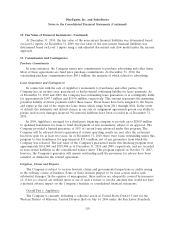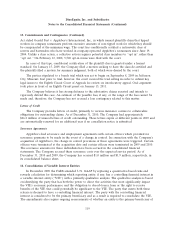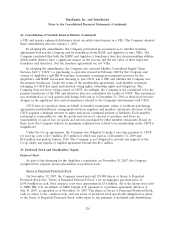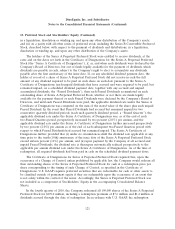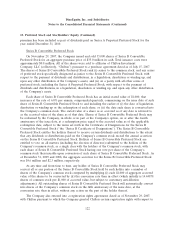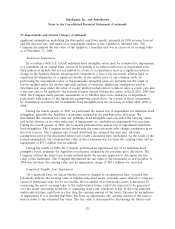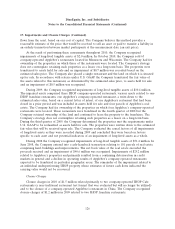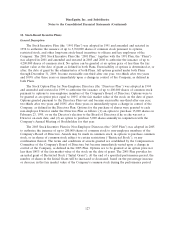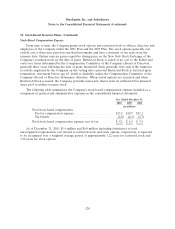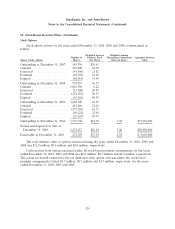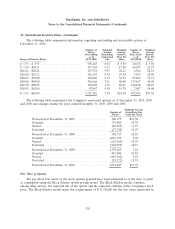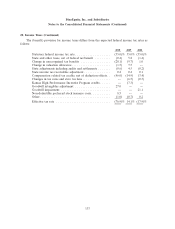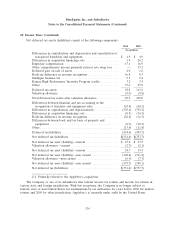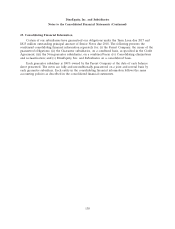IHOP 2010 Annual Report Download - page 144
Download and view the complete annual report
Please find page 144 of the 2010 IHOP annual report below. You can navigate through the pages in the report by either clicking on the pages listed below, or by using the keyword search tool below to find specific information within the annual report.
DineEquity, Inc. and Subsidiaries
Notes to the Consolidated Financial Statements (Continued)
18. Stock-Based Incentive Plans (Continued)
Stock-Based Compensation Expense
From time to time, the Company grants stock options and restricted stock to officers, directors and
employees of the Company under the 2001 Plan and the 2005 Plan. The stock options generally vest
ratably over a three-year period in one-third increments and have a maturity of ten years from the
issuance date. Option exercise prices equal the closing price on the New York Stock Exchange of the
Company’s common stock on the date of grant. Restricted Stock is issued at no cost to the holder and
vests over terms determined by the Compensation Committee of the Company’s Board of Directors,
generally three years following the date of grant. Restricted Stock generally vests only if the employee
is actively employed by the Company on the vesting date; unvested Restricted Stock is forfeited upon
termination, retirement before age 65, death or disability, unless the Compensation Committee of the
Company’s Board of Directors determines otherwise. When vested options are exercised and when
Restricted Stock is issued, the Company generally issues new shares from its authorized but unissued
share pool or utilizes treasury stock.
The following table summarizes the Company’s stock-based compensation expense included as a
component of general and administrative expenses in the consolidated financial statements:
Year Ended December 31,
2010 2009 2008
(In millions)
Total stock-based compensation:
Pre-tax compensation expense ...................... $15.2 $10.7 $12.1
Tax benefit .................................... (6.0) (4.2) (4.7)
Total stock-based compensation expense, net of tax ........ $ 9.2 $ 6.5 $ 7.4
As of December 31, 2010, $5.4 million and $6.8 million (including forfeitures) of total
unrecognized compensation cost related to restricted stock and stock options, respectively, is expected
to be recognized over a weighted average period of approximately 1.22 years for restricted stock and
1.50 years for stock options.
128


